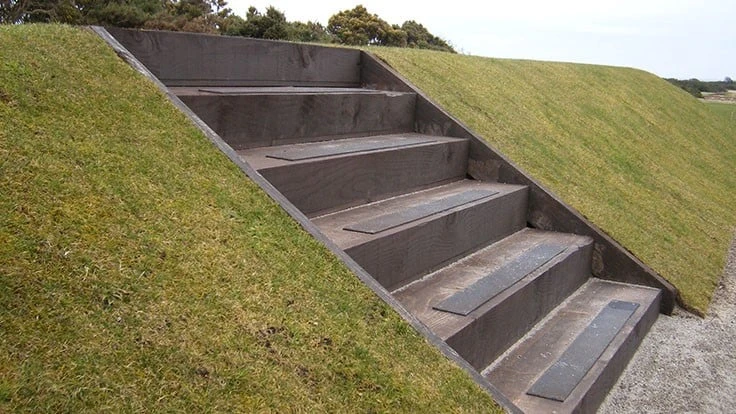
By Barry Eagle
Golf clubs host visitors of varying ages and physical mobility every day. Club owners have a duty of care to their visitors to make sure they are as safe as possible while on site. Various aspects to consider in order to achieve this include making areas accessible with ramps, providing railings where necessary and providing non-slip surfaces, particularly in areas with high footfall. How can you make sure this doesn’t become a problem on your course?
The impact of weather
Depending on the layout and design of your golf course, there could be a huge number of areas that are negatively affected by the weather when it comes to slip dangers. A concern for all outdoor venue owners as we approach the colder months, consideration must be given to how to keep the course safe for visitors.
When rain falls on grass, slabs, wood and other surfaces, they can quickly become slippery. Frost and snow will also pose problems, especially for visitors wearing shoes that have little grip. It’s a good idea to be prepared for this less favorable weather by putting in place adequate anti-slip protection before it’s needed.
Some owners try cutting corners with low-cost alternatives — anything from chicken wire fastened to slippery surfaces to gluing rubber mats in place. While inexpensive, these methods can lead to more problems when they become trip hazards — or in the case of chicken wire, potential sources of cuts.
Preparing for weather in different regions
Consideration should also be given to how best prepare for the region where your golf course is located. In areas that are prone to more rain and colder temperatures, it’s necessary to have adequate anti-slip protection in place year-round. In more temperate areas, where the impact of poor weather is less of a concern, it’s still a good idea to have protection in place before a problem arises.
The impact of high footfall
Another common issue for golf courses concerning slip hazards is high footfall. Of course, there are worse problems to have. A busy golf course is a goal for most course owners, though high numbers mean more wear and tear on ground surfaces.
As a result of the COVID-19 pandemic, golf courses are experiencing record play. With more visitors comes more pressure on your ground. When they walk across the golf course, their tread will put more stress on the different surfaces. Carefully trimmed grass will soon develop into patches of mud and smoothed out blades, a known slip hazard. Likewise, other paths and steps will become worn and pose a threat. This is particularly the case when patrons wear golf shoes with metal or rubber spikes.
The solution to this doesn’t need to be limiting the number of visitors to the golf course but rather to put in place anti-slip products that provide adequate protection.
Hazardous areas
Some of the areas most prone to slips, trips and falls on a golf course include:
- Walkways
- Bunker steps
- Ramps
- Reclaimed railway tracks
- Tee area steps
- Footbridges
- Restrooms
- Viewing platforms
These areas are often made of wooden decking or slabs, which quickly become slippery in poor weather and with wear and tear. To ensure the safety of visitors to your golf course, it’s recommended that anti-slip flat sheets or panels are fitted in the areas that experience the most footfall. These can usually be fixed to a range of surfaces, including timber, concrete and metal, which makes them suitable for all the most slippery areas of a golf course.
Most quality anti-slip sheets and panels are made with glass reinforced plastic, or GRP. This is a durable material that provides resistance against other surfaces, including shoes and golf cars.
As the influx of golf course visitors looks like it will continue to rise, it’s never been more important to make sure the grounds are as safe as they can be. Be prepared for more visitors and poor weather by considering how to make your golf course slip safe.
Barry Eagle is the managing director of GripClad, an anti-slip solutions company based in Hampshire, England.
Get curated news on YOUR industry.
Enter your email to receive our newsletters.Latest from Golf Course Industry
- Carolinas GCSA raises nearly $300,000 for research
- Advanced Turf Solutions’ Scott Lund expands role
- South Carolina’s Tidewater Golf Club completes renovation project
- SePRO to host webinar on plant growth regulators
- Turfco introduces riding applicator
- From the publisher’s pen: The golf guilt trip
- Bob Farren lands Carolinas GCSA highest honor
- Architect Brian Curley breaks ground on new First Tee venue





